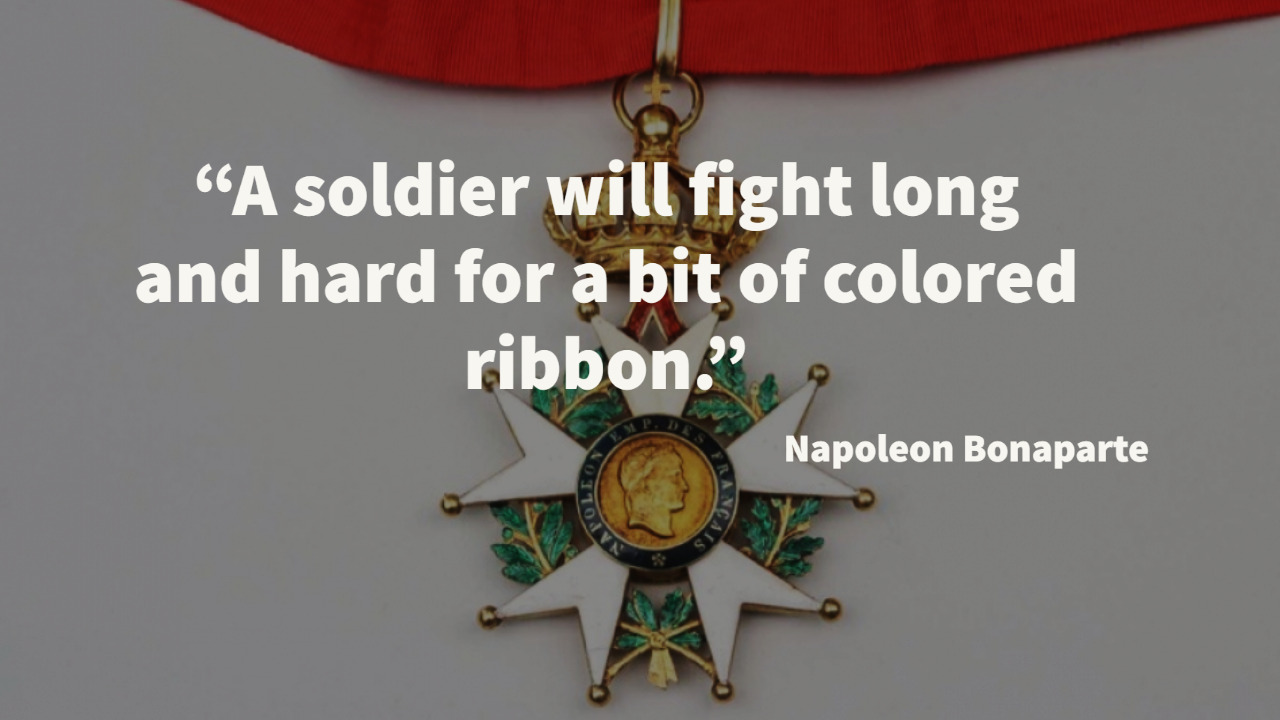A soldier will fight long and hard for a bit of colored ribbon.
Napoleon Bonaparte
Throughout history, military ribbons and medals have served as symbols of honor, valor, and recognition for the brave men and women who have served their countries in times of war and peace. These esteemed decorations hold a rich heritage, representing the sacrifices and achievements of soldiers. The origins of military awards can be traced back to ancient civilizations. In ancient Rome, soldiers were rewarded with various honors, including jewelry, crowns, and laurel wreaths, for their acts of valor and contributions to the empire. These early forms of recognition set the stage for the development of modern military decorations.
The concept of using ribbons and medals to honor military service gained prominence during the 18th century. In 1792, the United States established the Badge of Military Merit, the precursor to the modern-day Purple Heart. Created by General George Washington, it was awarded to soldiers for exceptional acts of bravery and merit. This marked a significant milestone in the history of military decorations.
As warfare evolved, so did the need for a comprehensive system of recognition. Military leaders recognized the importance of distinguishing and honoring soldiers’ achievements, leading to the creation of additional medals and ribbons. The British Army introduced the Waterloo Medal in 1815, which honored soldiers who fought in the Battle of Waterloo. This marked one of the earliest examples of a campaign-specific medal.
The 19th century witnessed further developments in military awards. The Victoria Cross, introduced in 1856, became the highest honor in the British military, recognizing extraordinary acts of valor. Many other countries, including France, Germany, and Russia, established their own prestigious decorations during this time.
The 20th century brought significant advancements in the design and distribution of military ribbons and medals. World War I saw the emergence of numerous awards to recognize bravery, service, and gallantry. Notable examples include the Medal of Honor in the United States, the Croix de Guerre in France, and the Iron Cross in Germany.
World War II marked a turning point in the history of military awards. The sheer scale and global nature of the conflict prompted nations to create new decorations and expand existing ones to honor the contributions of their armed forces. Medals such as the Distinguished Service Cross (United States), the Victoria Cross (United Kingdom), and the Order of the Patriotic War (Soviet Union) became synonymous with valor and sacrifice.
In modern times, military ribbons and medals continue to evolve to reflect the changing nature of warfare and the contributions of soldiers. Decorations are often tailored to specific campaigns, service branches, and acts of exceptional service. They recognize not only acts of bravery and combat prowess but also achievements in leadership, humanitarian efforts, and meritorious service.
Today, military ribbons and medals hold a special place in the hearts of soldiers and their families. They serve as tangible reminders of the sacrifices made and the dedication exhibited by those who serve their countries. These symbols of honor are cherished heirlooms that pass down through generations, telling stories of valor and courage.

